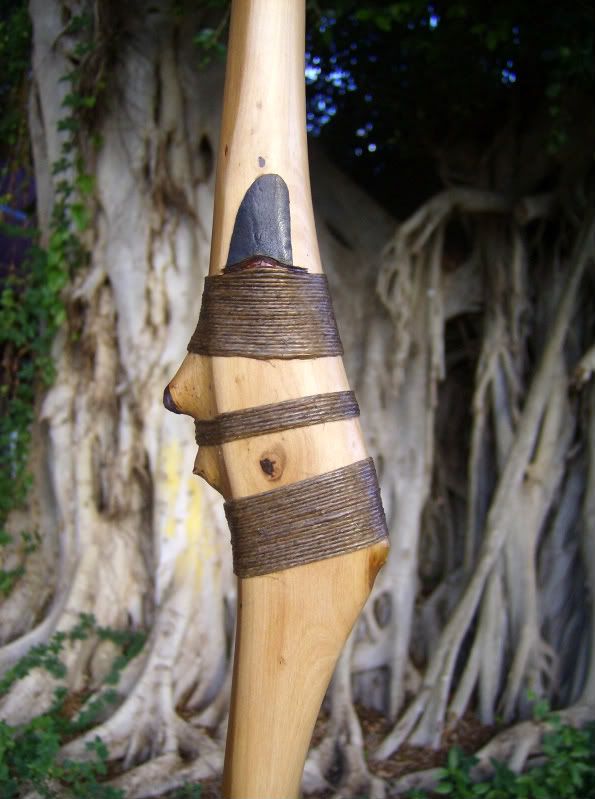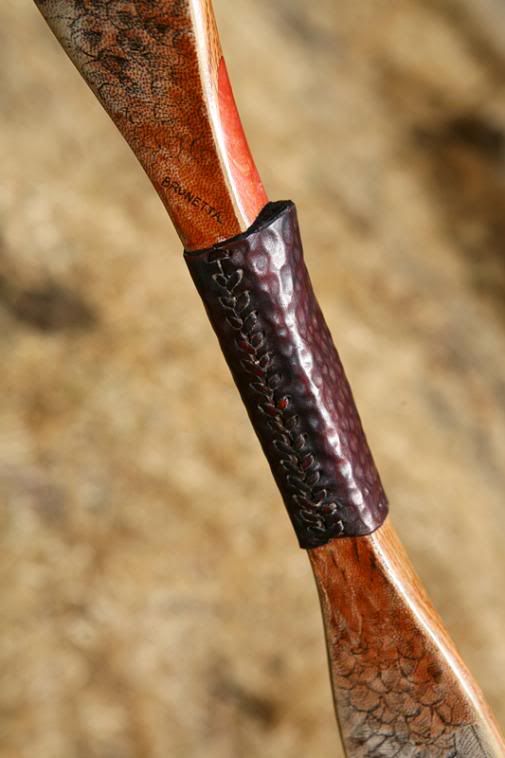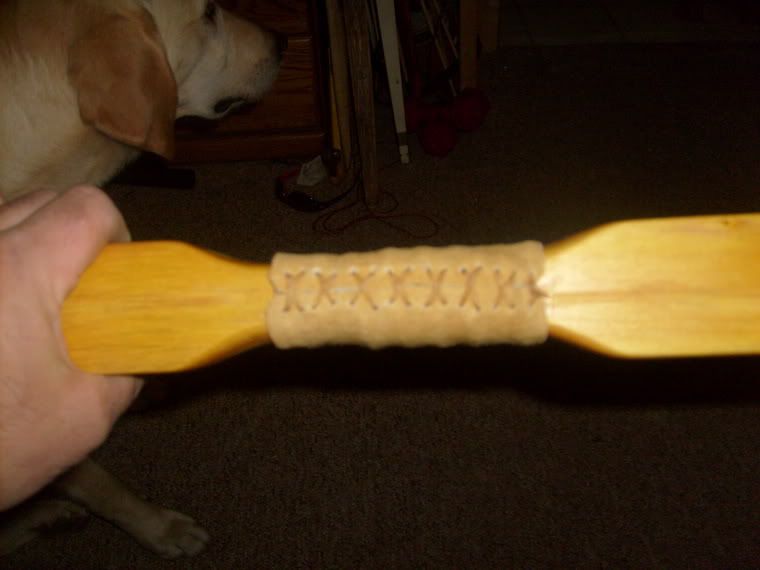News everyone!
First off, the walnut bow ended up having some tiller shifting problems. remember how I said after 1,000 shots the bow will have stabilized (or died)? well, i'm still wayyy under that, so this can happen. Basically, one limb ended up taking on more bend. There is a way to fix that. Figure out what is bending more than the rest, and remove a small amount of wood everywhere else. Don't touch what is bending too much. When I say a small amount of wood, I mean small. I drew pencil lines on the belly where I needed to remove wood, and scraped just barely enough off to remove the pencil marks. I used a very fine rasp and a card scraper. Of course this means i need to do more coats of oil and wax, but that's the beauty of oil finishes, like tuna said.
Also, I should've added to the list of bow care (I think I will) do NOT overdraw your bow. I was screwing around with this walnut one and the oak one I have set aside for heat treating. The oak one is far lighter, and this caused me to over draw slightly past where I usually anchor, when I head a loud "TICK". This is a morbid sound when a bow is being drawn. It usually means somewhere on the back, wood has just cracked. It can be a splinter lifting from a corner, or this:

I followed the crack with pencil marks. Notice how the crack ends on each side when it hits an early growth line? In this case, only 1 ring cracked. The other ones can still take the strain, and it did stand up to being drawn a few more times before I could figure out where the noise came from. That doesn't mean it will last forever, though. Those other rings are under more strain at that point, and if I kept shooting, the bow would likely snap right there. I'm surprised the problem didn't occur here:
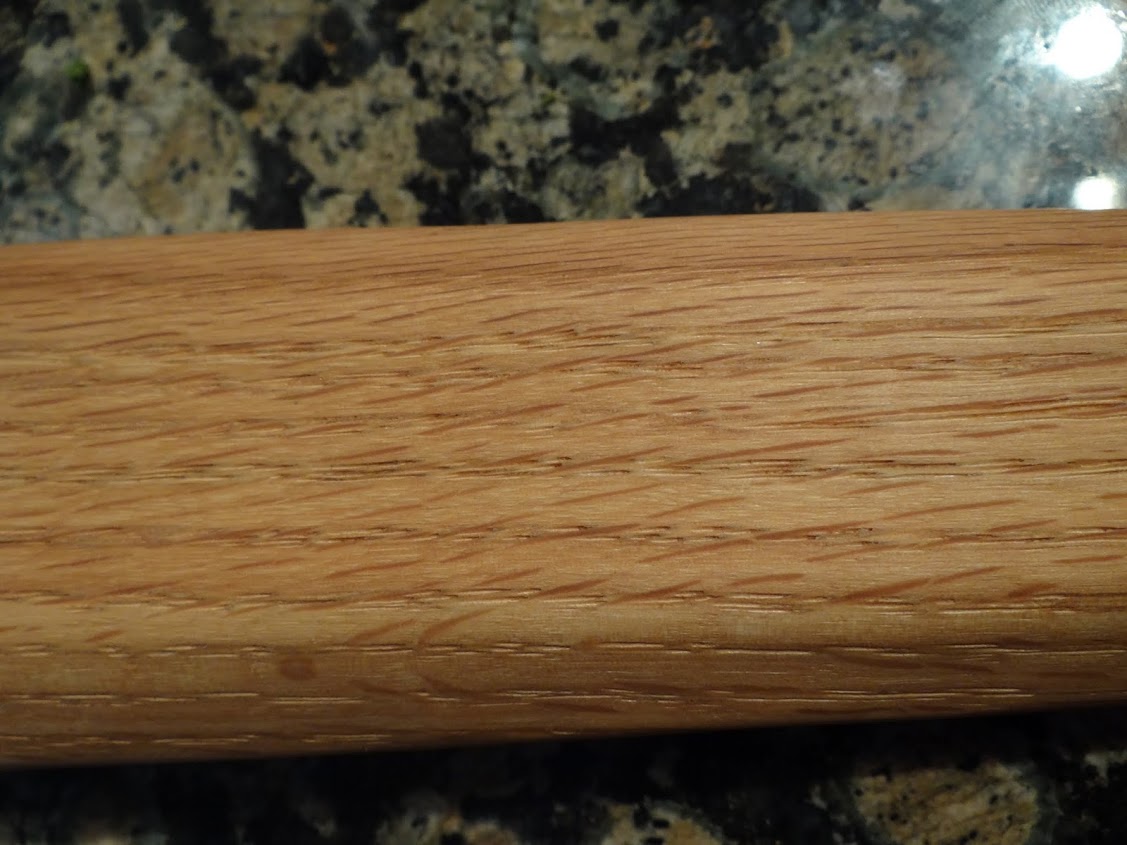
Thats about the same location on the other limb. Remember how I said oak has multiple lines in it, and if they aren't all parallel it means wood fibers are being cut through? Well that part of the limb has some pretty violated fibers. It hasn't caused a problem there, probably because of the flat back distributing stress evenly. I don't know why the other part cracked. I didn't finish this bow very well and there were tons of scratches and nicks all over the back, I probably left one too deep for the bow to handle. Lesson 2 is don't leave nicks on the back of the bow!
All is not lost for that one. I still plan on heat treating it, but I'm also going to back the bow with canvas or linen which I will purchase tomorrow. Something like silk would work as well, but probably not cotton. Cotton actually takes a 'set' in tension, though it's breaking strength is quite strong. The backing will prevent the split from opening further. Flax (linen) actually stacks in tension. Bending wood increases resistance like a spring being pushed down, with a set spring rate increase per inch, but flax has an exponential spring rate. Every millimeter it's stretched, the resistance goes up faster than the previous millimeter. This means the farther the split opens, the harder the flax will try to pull it shut. This should stop it dead in it's tracks.
So, on to why heat treating works so well for bows. Heat treating is done with a heat gun on the belly of the bow. This can do a number of things. For one, wood can be bent with heat. Dry heat and steam heat both work, but using a heat gun tends to 'cook' the wood a bit. Usually, you heat the wood to a medium brown, and for whatever reason this increases the resistance to compress. More compression strength means the back has to handle more tension force, and in this way the bow ends up storing more energy without needing more wood. This is of course assuming the thing doesn't break. More energy storage is reflected in a higher draw weight without higher limb mass, increasing the power to weight ratio of the bow, so to speak, making for a faster bow. you can also retiller the bow back to the original weight, which would still make for faster arrow speed because of the reduced mass. I'm going to try a little of both. I want to raise the weight about 5#.
Remember how, early on, I said bow shape (meaning side view bend shape from unbraced, to braced, to full draw) effects the shape of the power curve? Well adding reflex through heat treating can plump up the power curve in the same way. Look at this comparison between the walnut bow and the oak bow:

Both are unstrung, and the back faces left. You can see the walnut bow has reflex, while the oak bow has taken a lot of set. It's not as dramatic as it looks, since the backs of the bows aren't lined up, the walnut bow is about an inch in front of the oak. It's still easily 3" or more difference. This means the oak one has to bend less to achieve brace height, so it is under less stress early on in the draw. This means early draw weight is very low compared to full draw weight, and the power curve has to bend upward near the end. This means there is less energy stored per pound of full draw weight. This bow is sluggish. The walnut bow has far more early draw weight because the tips have to bend very far to achieve brace height. The power curve, then, starts higher up, and doesn't have to be as steep to achieve full draw weight. You may ask, well then why don't we just glue up all bows with a e36m3 load of reflex? well...
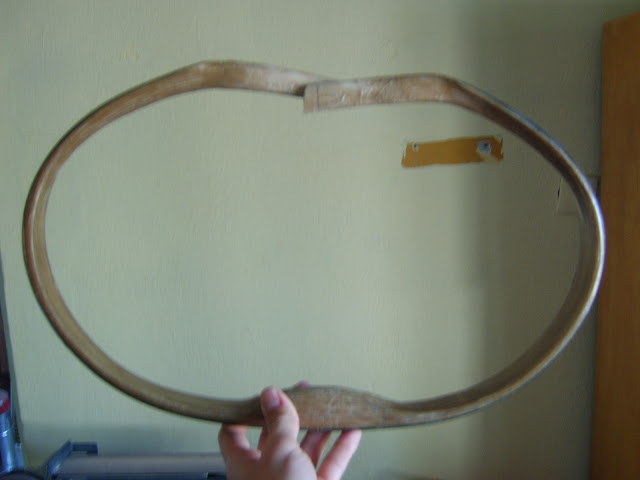
That is a Turkish flight bow with unstrung reflex such that the tips touch. These have MASSIVE energy storage per final draw weight, but there's a catch. They aren't made of wood. There is a limit to how far wood can bend, and such reflex would push the wood to it's limits. There is NO way an all wood bow could do that. Those bows have a thin wood core, with horn glued on the belly and sinew on the back. Horn and sinew can stretch/compress far more than wood without breaking, so such designs are possible. However, the materials weigh much more, and these recurved designs are prone to twisting and breaking. To prevent twisting, they must be meticulously made and have extra limb mass to resist twisting. This extra weight means a good amount of power is used to move the limbs forward. Because of this, hunting weight composite bows like this shoot slower than wooden ones, despite the crazy amount of work that goes into them. As the weight increases, the amount of extra material needed to keep them stable increases only slightly, so very heavy composite bows out shoot heavy longbows.
I'll go over the process of heat treating when I do it, but the way to add reflex is to clamp the bow into reflex and heat it. Clamping it into the shape creates stress, and the heat relieves the stress, making that shape permanent. Because of this, a perry reflexed bow shouldn't be heat treated. The perry reflexing (gluing in the reflex) causes internal stresses, and applying heat would eliminate those beneficial stresses. I suppose I could have heat treated the belly wood and THEN glued it into reflex, but i've never tried that.
Recurves also add power storage per final draw weight in a number of ways. Like I said before, the thing that determines shape of the power curve is the shape of the bow. Adding bend strength will only make that shape steeper, changing the bend shape will change the shape of the power curve. A key thing is string angle. You'll notice, the string will change angle as you pull it back, and the tips will get closer together. A shorter bow has to bend farther, thus the string angle will increase more, and the power curve will look more like a exponential curve. If this hypothetical shorter and longer bow are both 50# @ 28", the shorter bow will store less energy. A recurve messes with the shape a lot. If that short bow is compared to a recurve of the same length, the recurve will not have as dramatic of a string angle, and will store more energy. Recurve tips also tend to rest far ahead of the handle, adding in the 'reflex' effect, increasing tension at brace. More power is the result. In this way, a recurve can store 'longbow' power (or more) in a short package. This makes it easier to carry through the brush without the power loss of the short bow. the longer and steeper the recurve, the more the effect, up to a point.
Remember the wood can only take so much stress, and a well made long bow will push it to the limit as well, so you may not out shoot a well made one with your recurve. There's an anecdote in the bowyers bible #4 where a couple of the authors were shooting through a chronograph at a bow get together. A couple guys with fiberglass recurves confidently shot a couple arrows through the chrono, followed by a board bow made by one of the authors. The bow made from a hickory board shot a wooden arrow FASTER than the recurves. Now, this bow was a particularly fast shooting design made by one of the best wood bowyers alive, shot by a flight shooter who knew how to get every last fps out of a bow. Still, it beat the fancy, powerful, pro made recurves, and it wasn't a flight bow. It was a long lasting target bow. (does anyone want an explanation of the difference between a flight bow and a target/hunting bow?)
Many recurves have a 'string contact' component, as well.

Notice on this bow how the string isn't touching only at the nocks. The string actually contacts the bow a few inches inside of the tips. It may be pulling on the nocks, but the shape (and that's the important part) changes as if the string is pulling on a shorter bow. This makes the power curve increase sharply at the beginning, but as the bow is pulled, the string lifts off, lengthening the distance between string contact point, causing the bow to bend like a longer bow. This again means more early draw weight with the same full draw weight. More energy storage. Check out this power curve drawing I found on the internets:

That does a decent job showing what I mean. Pretend "R/D Longbow" means a longbow with reflex (that's what the R means) but ignore the D. Well, don't ignore it, google it. Most mass produced longbows are deflexed by the handle and reflexed by the tips. This stores a lot of power while being stable. It's a great design, but tricky for a newbie to tiller properly.
Assuming all 3 end at the same max weight (pretend they do) the early draw weight will be different, effecting total energy stored. Not to sound like a broken record, but don't expect that means they shoot faster (though that's a safe bet), there are other factors at work.
There are multiply ways you can make a recurve, but a good way to split them is into 'working' and 'static' recurves. In a working recurve, the recurved part of the limbs will unbend slightly during draw, while a static recurve's tips remain stiff. In general, static recurves store slightly more energy, since the string angle goes up slightly more when a working recurve's ends straighten out (and therefor get slightly closer together). Here's a pic of a static recurve I found on some UK bow website:

Notice how thick the tips are. This is to resist bending. Also notice how bulky they are- far more massive than a longbow would need. This is also a contact recurve, with the strings touching inwards from the tips at brace height. This bow probably stores a ton of energy and feels awesome to pull. It probably shoots awesome, too. take a look and imagine what would happen if the bow was twisted even a little bit, and the strings didn't contact right in the middle of the tips. If they were slightly to one side, they may slip right on by the recurved tips. this would be followed by a CRACK when the thing twisted itself to death. If you want to make a recurve (make a few longbows first) you'll have to be extremely careful.

That bow is a static recurve with NO contact. This kind of bow stores lots of energy, but not as much as a contact recurve. it's also a little less problematic if it's out of balance. This is also very hard to make out of only wood notice how bend the limbs are at brace height, and imagine what they'd be like at full draw. I've shot one of these laminate/wrapped limb horse bows, and it was disappointing. When my 45# bear recurve shot 170 yards or so, the horse bow struggled to make half that. it was a supremely poorly made horse bow, though, and I suspect the wrapping created friction, slowing cast. A well made one would be pretty sweet I bet, but I haven't shot a well made one.
To help the string track straight, some bows take this approach:

This looks dang cool, but adds tip mass. If you can't see, there are grooves cut in the tips to guide the strings. This means there must be more wood than needed to keep the bow working, but the trade off is a little bit more safety. There are ways to keep the extra mass to a minimum, and for those you should check out the bowyers bible #2. I can't explain it coherently enough, and It's probably illegal to photocopy the book.
There are other considerations with a recurve. For one, they are MUCH louder than a longbow. Especially contact recurves. The string slams into the bow limbs, making a whack or twang noise. Also, longbows tend to be more accurate. The longer limbs tend to act like stabilizers, while the lower early draw weight gives a more gentle shove to the arrow leaving the bow. Many production recurves have HEAVY handles, though. This weight also acts to stabilize the bow. When you are aiming and holding at full draw, you may notice a slight shaking. The extra weight dampens that shaking. The weird scaffolding looking crap sticking out the front of an olympic target bow takes this even farther by placing mass farther away from where you hold the bow. These set ups are primarily focused on stabilization, since, well, it's the olympics and the competition is tough. Theoretically, the same bow shooting the same, well matched arrow will shoot consistently no matter what, but humans aren't robotic shooting machines, and sometimes we need help. If you're anything like me, you won't find those as fun to shoot. I have one, and it's crazy stable, and insanely fast (one of the benefits of not being limited to wood. Carbon is far stronger and lighter). For some reason, I don't enjoy it as much. If you do, then pony up the cash and buy one. They are incredible.

![]()
